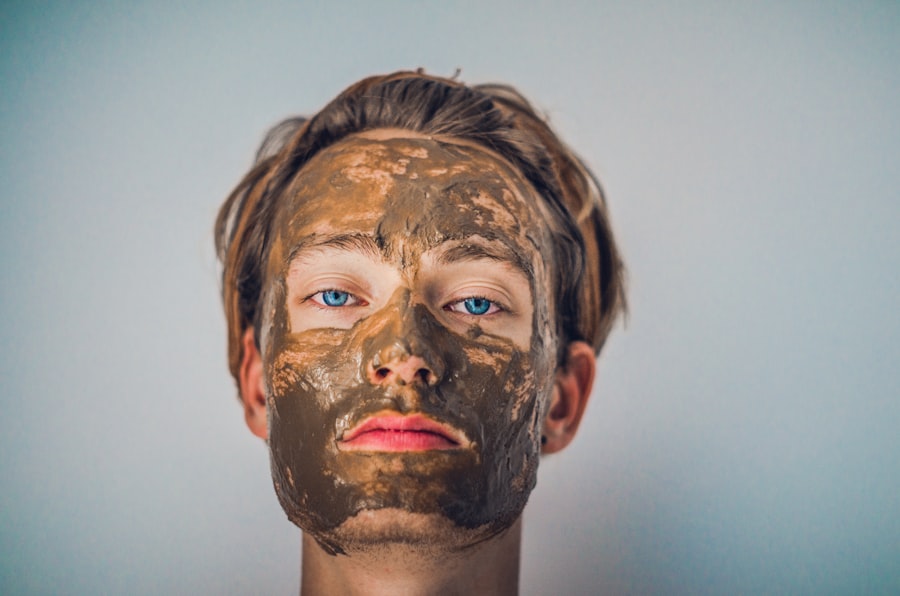Laser hair removal is a popular cosmetic procedure that utilizes concentrated light beams to eliminate unwanted hair. This method has gained traction over the years due to its effectiveness and long-lasting results compared to traditional hair removal techniques like shaving, waxing, or plucking. If you’ve ever found yourself frustrated with the constant upkeep of hair removal, you might be intrigued by the prospect of a more permanent solution.
The procedure is suitable for various body areas, including the legs, underarms, bikini line, and even the face. The appeal of laser hair removal lies not only in its efficiency but also in its ability to target hair follicles without damaging the surrounding skin. This precision makes it a favored choice for many individuals seeking a smoother appearance.
As you consider this option, it’s essential to understand how the process works and what it entails, as well as the potential risks involved. Knowledge is power, and being informed will help you make the best decision for your personal grooming needs.
Key Takeaways
- Laser hair removal is a cosmetic procedure that uses a concentrated beam of light to remove unwanted hair.
- The laser targets the pigment in the hair follicle, damaging it and inhibiting future hair growth.
- Potential health risks of laser hair removal include skin irritation, burns, pigment changes, scarring, and eye damage.
- Precautions and safety measures, such as using a qualified and experienced practitioner, can help minimize the risks associated with laser hair removal.
- While laser hair removal is generally considered safe when performed by a trained professional, it is important to be aware of the potential risks and take necessary precautions.
How Does Laser Hair Removal Work?
The mechanics of laser hair removal are fascinating and rooted in science. At its core, the procedure involves the use of a laser that emits a specific wavelength of light. This light is absorbed by the pigment, or melanin, in the hair follicles.
When the laser energy is absorbed, it converts into heat, which effectively damages the follicle and inhibits future hair growth. This process is known as selective photothermolysis, where the laser selectively targets dark hair while leaving the surrounding skin unharmed. Before undergoing treatment, you will typically have a consultation with a qualified practitioner who will assess your skin type and hair color.
This assessment is crucial because different lasers are designed to work best on specific skin tones and hair types. For instance, individuals with lighter skin and darker hair tend to see the best results due to the contrast between the two. During the procedure itself, you may experience some discomfort, often described as a sensation similar to a rubber band snapping against your skin.
However, many clinics offer cooling devices or topical anesthetics to minimize any pain.
Potential Health Risks of Laser Hair Removal

While laser hair removal is generally considered safe for most individuals, it is not without its potential health risks. As with any medical procedure, there are inherent risks that you should be aware of before making a decision. Understanding these risks can help you weigh the benefits against any possible downsides.
Some individuals may experience side effects that range from mild to severe, depending on various factors such as skin type, hair color, and the skill of the practitioner. One of the most common concerns associated with laser hair removal is skin irritation. This can manifest as redness, swelling, or a rash in the treated area.
While these symptoms are usually temporary and resolve within a few hours to a few days, they can be uncomfortable and may deter some individuals from pursuing further treatments. It’s essential to discuss any pre-existing skin conditions or sensitivities with your practitioner to ensure that you are a suitable candidate for the procedure. Mayo Clinic
Skin Irritation and Burns
| Severity | Description |
|---|---|
| Mild | Redness and slight discomfort |
| Moderate | Blistering and more intense pain |
| Severe | Deep burns with potential tissue damage |
Skin irritation is one of the most frequently reported side effects of laser hair removal. After treatment, you may notice redness or swelling in the area where the laser was applied. This reaction is typically mild and subsides within a short period; however, it can be alarming if you are not prepared for it.
The intensity of irritation can vary based on your skin type and sensitivity levels. For those with sensitive skin, it’s advisable to take extra precautions and consult with your practitioner about potential pre-treatment measures. In more severe cases, there is a risk of burns occurring during the procedure.
This can happen if the laser settings are too high or if proper safety protocols are not followed. Burns can lead to discomfort and may require medical attention to heal properly. To minimize this risk, it’s crucial to choose a reputable clinic with experienced practitioners who understand how to adjust laser settings based on individual needs.
Always ask about their safety protocols and what measures they take to prevent such complications.
Pigment Changes and Scarring
Another potential risk associated with laser hair removal is pigment changes in the skin. This can manifest as either hyperpigmentation (darkening) or hypopigmentation (lightening) of the treated area. These changes occur due to the laser’s interaction with melanin in your skin and can be particularly concerning for individuals with darker skin tones.
Scarring is another serious concern that can arise from laser hair removal if not performed correctly. While scarring is relatively rare, it can occur if there is an adverse reaction to the treatment or if post-treatment care instructions are not followed diligently.
To reduce your risk of scarring, adhere strictly to aftercare guidelines provided by your practitioner. This may include avoiding sun exposure, refraining from using certain skincare products, and keeping the treated area clean and moisturized.
Eye Damage

Eye damage is a less common but significant risk associated with laser hair removal, particularly when treating areas near the face or neck. The intense light emitted by lasers can cause serious harm to your eyes if proper precautions are not taken during treatment. For this reason, it’s crucial that both you and your practitioner wear protective eyewear during the procedure to shield your eyes from potential harm.
If you are considering laser hair removal on facial areas such as the upper lip or chin, be sure to discuss eye safety measures with your practitioner beforehand. They should have protocols in place to ensure that both you and their staff are adequately protected during treatment sessions. Being proactive about eye safety will help alleviate any concerns you may have about this aspect of the procedure.
Precautions and Safety Measures
To ensure a safe experience with laser hair removal, there are several precautions and safety measures you should consider before undergoing treatment. First and foremost, choose a licensed and experienced practitioner who specializes in laser treatments. Research their credentials and read reviews from previous clients to gauge their expertise and reputation in the field.
Before your appointment, it’s essential to have an open dialogue with your practitioner about your medical history, skin type, and any medications you may be taking.
Additionally, follow any pre-treatment instructions provided by your practitioner, which may include avoiding sun exposure or certain skincare products leading up to your appointment.
After treatment, adhere strictly to aftercare guidelines to promote healing and reduce complications. This may involve applying soothing creams or gels, avoiding hot showers or baths for a few days, and steering clear of direct sunlight on the treated area until it has fully healed.
Is Laser Hair Removal Safe?
In conclusion, while laser hair removal offers an effective solution for those seeking long-term hair reduction, it is essential to weigh its benefits against potential risks carefully. Understanding how the procedure works and being aware of possible side effects will empower you to make an informed decision about whether it’s right for you. By choosing a qualified practitioner and following safety precautions diligently, you can significantly reduce your risk of complications.
Ultimately, laser hair removal can be a safe option for many individuals when performed correctly and under appropriate conditions. If you’re considering this treatment as part of your grooming routine, take the time to research thoroughly and consult with professionals who can guide you through the process safely. With proper care and attention, you can enjoy smoother skin without the hassle of frequent hair removal methods.
There are many benefits to laser hair removal, but it is important to consider the potential health risks as well. According to a recent article on inlaserhairremoval.com, some of the risks associated with laser hair removal include skin irritation, burns, and changes in skin pigmentation. It is crucial to consult with a qualified professional before undergoing any laser hair removal treatment to ensure that it is safe for your skin type and overall health. If you have any concerns or questions about the procedure, you can reach out to the experts at inlaserhairremoval.com for more information.
FAQs
What is laser hair removal?
Laser hair removal is a cosmetic procedure that uses a concentrated beam of light (laser) to remove unwanted hair.
Are there health risks associated with laser hair removal?
While laser hair removal is generally considered safe, there are some potential health risks, including skin irritation, pigment changes, and burns. It is important to have the procedure performed by a qualified and experienced professional to minimize these risks.
Can laser hair removal cause skin damage?
In some cases, laser hair removal can cause skin damage such as burns, blistering, and scarring. This risk can be minimized by ensuring the procedure is performed by a trained and experienced professional using the appropriate equipment for your skin type.
Are there any long-term health risks associated with laser hair removal?
There is limited research on the long-term health risks of laser hair removal. However, some studies suggest that there may be a potential risk of skin cancer, particularly if the skin is exposed to excessive sun after the procedure. It is important to follow post-procedure care instructions and protect the treated area from sun exposure.
Can laser hair removal cause eye damage?
Laser hair removal can potentially cause eye damage if the laser is not used properly. It is important for both the patient and the practitioner to wear protective eyewear during the procedure to minimize this risk.
Is laser hair removal safe for all skin types?
Laser hair removal is generally safe for all skin types, but there is a higher risk of pigment changes and skin damage for individuals with darker skin tones. It is important to seek out a practitioner with experience in treating diverse skin types to minimize these risks.




